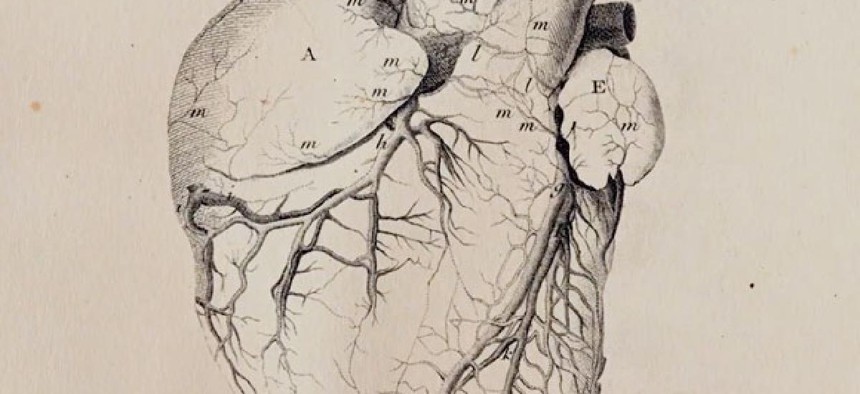Video: A computational model of the human heart

Barcelona Supercomputing Center
How we try to make sense of the wondrous organ, and when the mechanism fails.
The heart is a beautiful pump. While lacking the poetry of most odes to the heart, the Barcelona Supercomputing Center's project, Alya Red , pays homage to the organ by trying to model it. The task of simulating the way electrical impulses make the heart muscles contract to pump blood takes 10,000 processors.
These particular computing nodes are located in one of the world's 500 most powerful computers, which itself sits within a deconsecrated 19th-century chapel at the Polytechnic University of Catalonia.
This very 2013 arrangement came to my attention through a post by Emily Underwood at the science blog, Last Word on Nothing. An old friend of Underwood's pacemaker failed, causing him to have a stroke that robbed the man of his ability to speak.
Hundreds of thousands of computations simulate the organ's geometry, and the orientation of long muscle fibers that wring the heart when they contract. Now for the horrifying part: this requires the supercomputer to do so much math that it must break up the work among 10,000 separate processors. Even Fernando Cucchietti, a physicist who helped create the video, agrees that the heart's complexity has a dark side. At first, the video conveyed "too much wonder," he says "It was almost appalling."
Appalling wonder -- that just about says it. On good days, when I try to write about such things, I feel like an industrious housewife, tidying up cluttered corners and making clean, lemon-scented sentences. Maybe this new supercomputer model will make better pacemakers, or help devise new ways to mend my friend's broken heart. Then there are days like this, when I think about the tiny metal object that both enabled and derailed his life, and just feel speechless.
Some days, the mechanism fails.






